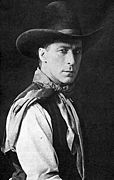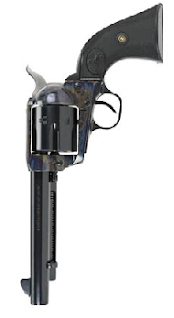Copyright 2023 by Gary L. Pullman
My Aunt Ruby Messenger wrote a book, Faith and the Edge of Danger, chronicling her missionary service in Guatemala during the 1950s. When I read a copy, I followed her travels, using Internet maps, images, and articles to acquaint me with the places she traveled. Doing so enhanced my reading, and I began to employ this strategy when reading most books.
Of course, as a writer of Western novels (and one novella, the prequel to my series An Adventure of the Old West), I often turn to Internet sources as I research the times and places pertinent to the action of my stories. In the process, I learn a lot about a period that I once thought I knew a fair amount. Questions arise frequently in such a process. Did the Central Pacific Railroad include a spur from Carson City, Nevada, south to Aurora, Nevada?
Of course, as a writer of Western novels (and one novella, the prequel to my series An Adventure of the Old West), I often turn to Internet sources as I research the times and places pertinent to the action of my stories. In the process, I learn a lot about a period that I once thought I knew a fair amount. Questions arise frequently in such a process. Did the Central Pacific Railroad include a spur from Carson City, Nevada, south to Aurora, Nevada?
After consulting several period maps, an excellent one of which, by the way, is the 1884 Rand McNally map of Nevada, I wasn’t sure. The maps showed the Central Pacific Railroad as a heavy black line without the short intersecting horizontal lines that usually indicate a railroad. Another such line ran from Carson City, south, along the Soda Springs Valley, but it wasn’t labeled as a railroad, so I thought that it was probably a road.
Further research resulted in my discovery of the Carson & Colorado Railway, which ran from the Mound House, west of Carson City, south along the Soda Springs Valley, passing, at Queen, into California, and ending at Keller, near Owens Lake. The railway, I learned, “was incorporated on May 10th, 1880, eleven years to the day after the transcontinental railway was completed.” I could have U. S. Marshal Bane Messenger and his deputies Badger Thompson and Luke Meadows load their horses into one of the Carson & Colorado Railway’s boxcars, and the lawmen could travel as passengers aboard one of the railway’s passenger cars as far south as they chose. Or could they? Did narrow-gauge railways accommodate boxcars?
The answer was that, yes, such railways could accommodate boxcars designed and built to fit marrow-gauge tracks. I didn’t know whether the Carson & Colorado Railway included passenger cars, since the railway was created for miners, so I decided to have Bane, Badger, and Luke keep their horses company in the boxcar. It would have been a rough ride, no doubt, but the lawmen were tough, and the train would cut hours off their trip to Cottonwood, Nevada, from whence they would make their way west to Aurora and, eventually, Bodie, California, on horseback.
I had frequent occasion to consult websites aplenty. How much was a hotel room? A beer? A shot of whiskey? A bottle of whiskey? A fancy French meal? How long did it take to ride a horse from hither to yon? How long did it take a train to travel from Point A to point B? How fast did horses walk, trot, and gallop? How much did elevation decrease a horse’s walking speed? Was the word “gumption” in use in 1884? Did cowboys and gunfighters use the word “six-shooter” or was that just a word employed by Hollywood scriptwriters?
Labeled diagrams provided terminology about architectural features, tack, stagecoaches, locomotives, and a variety of other objects, as well as the dates at which Western towns became electrified, ceiling fans first became available, indoor plumbing was used on the Western frontier, and who was president of the United States or governor of Nevada at the time of my novel. (Did you know that in the early days of its statehood, Nevada’s lieutenant governor also served as the warden of the state’s one-and-only prison, which frontier newspapers always seemed to find it necessary to advise their readers, was “at Carson City.”)
(The newspapers of the day often left off “City” in reporting about such places as Carson City [“Carson”] and Virginia City [Virginia], which I found confusing at first.) By the way, if you enjoy reading old newspapers, the Library of Congress’s website Chronicling America: Historic American Newspapers has a lot of them, dating from 1770 to 1963, on which keyword searches can be performed for all papers or for only those selected for a particular state during a restricted period of time.
The writing is often amusing, in the vein of Mark Twain, even when the subject itself is serious, and the accounts of historical figures and events provide insight into how such persons and incidents were viewed by those who reported them at the time, or shortly after, the occurrences happened. I owe much to the Nevada newspapers’ (and others) contemporary accounts of the State Prison break, the West’s first stagecoach robbery, and other phenomena of the times upon which I base my own fictionalized representations in Manhunt: Return to Justice, which will be available by the autumn of 2024, if not before.



































